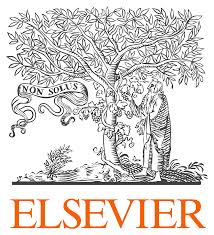Location
What is ScienceDirect
Elsevier’s leading platform of peer-reviewed scholarly literature.
University libraries and institutions offer ScienceDirect access to their communities of researchers.
Researchers, teachers, students, healthcare and information professionals use ScienceDirect to improve the way they search, discover, read, understand and share scholarly research.
Members:
Resources
Displaying 121 - 125 of 284Adoption of improved amaranth varieties and good agricultural practices in East Africa
This study quantifies the adoption of improved amaranth varieties in Kenya and Tanzania, and the extent to which these result from international vegetable breeding research conducted by the World Vegetable Center (WorldVeg) and partners. The study used expert elicitation and a questionnaire survey among vegetable seed producers. Nine expert panels were conducted involving 123 local experts. The results show that improved amaranth varieties were planted on 51% of the planted area in Kenya and 70% in Tanzania.
How Community-Based Rangeland Management Achieves Positive Social Outcomes In Mongolia: A Moderated Mediation Analysis
Evidence-based policy guidance necessary for addressing mixed outcomes of community-based rangeland management (CBRM) is limited, dominated by case studies, and lacking coverage of diverse ecological settings. In remedy, we studied 65 traditional neighborhoods and 77 formally-organized CBRM groups across four ecological zones and investigated how and when CBRM obtains greater social outcomes than non-CBRM neighborhoods.
Do farmers care about rented land? A multi-method study on land tenure and soil conservation
Does ownership status of agricultural land determine farmers’ soil use behaviour? Why (not)? We investigate this old question using multiple methods and data. We apply econometric analysis to plot-level data to determine whether planting decisions differ between rented and owned plots. In addition, we analyse interviews with Austrian farmers with the aim of explaining (a lack of) differences. We find a very small influence of tenancy on crop choice in the quantitative part of the study, and qualify these findings in the qualitative part.
Key landscape features in the provision of ecosystem services: Insights for management
Whereas ecosystem service research is increasingly being promoted in science and policy, the utilisation of ecosystem services knowledge remains largely underexplored for regional ecosystem management. To overcome the mere generation of knowledge and contribute to decision-making, scientists are facing the challenge of articulating specific implications of the ecosystem service approach for practical land use management.
Effects of historical land use and land pattern changes on soil erosion – Case studies from Lower Austria and Central Bohemia
This paper addresses changes in land use and in the spatial distribution of land units and their influence on the soil erosion risk in two areas with a different geomorphology and a different historical and political development: an intensively-used lowland agricultural watershed in central Bohemia, Czech Republic, and a partially hilly agricultural and wine-producing municipality in northern Austria.


